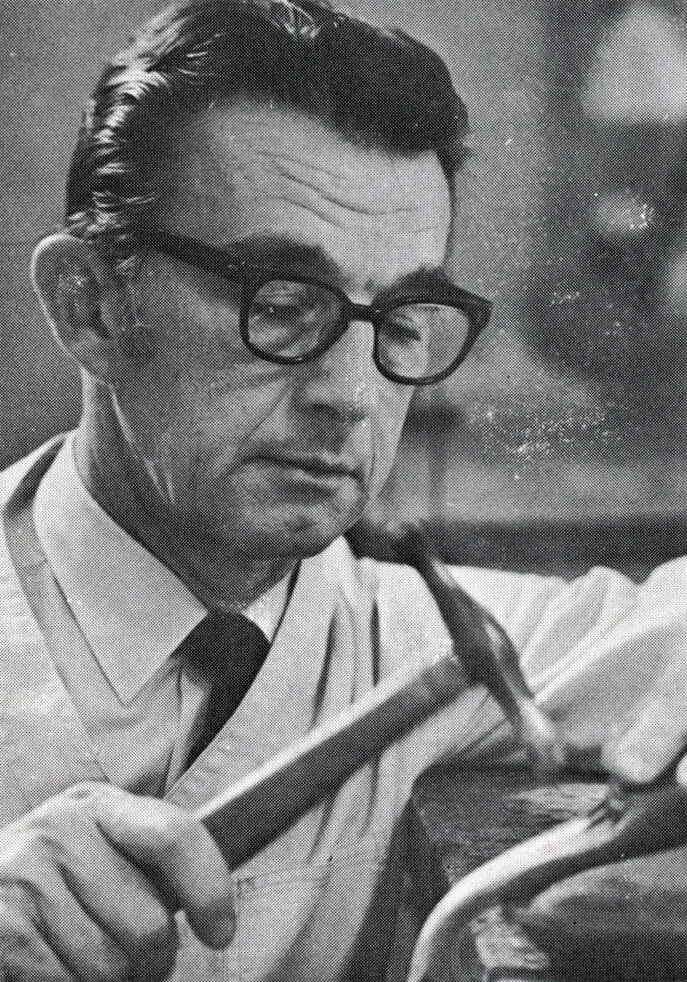John Paul Miller
Photograph by Lee Nordness
When American studio jewelry took a turn to the conceptual in the late 1960s with the embrace of found objects, political statements, and Pop aesthetics, it abandoned a set of other values that prized excellent technique, precious materials, and historical reference. Yet some jewelers continued to uphold these more traditional qualities. Among the very finest was John Paul Miller. A stalwart of the extraordinary craft scene in 1960s Cleveland (which also included the metalsmith Frederick A. Miller—no relation—Claude Conover, and Toshiko Takaezu), Miller had trained at the School for American Craftsmen in Rochester, New York, including study with Baron Erik Fleming, a silversmith to the Swedish court. Such early experiences fired Miller’s imagination regarding sophisticated technique.
He became best known for his skill in granulation, an ancient process explained in the Objects: USA catalog as “the art of embellishing a gold surface with infinitesimal spheres of gold, some as tiny as 1/200th of an inch in diameter.” The spectacular Armored Polyp pendant, which represented Miller in the exhibition, combined this process with an organic, oceanic shape and a dash of mid century abstraction, seen in the floating forms at the top of the composition.


